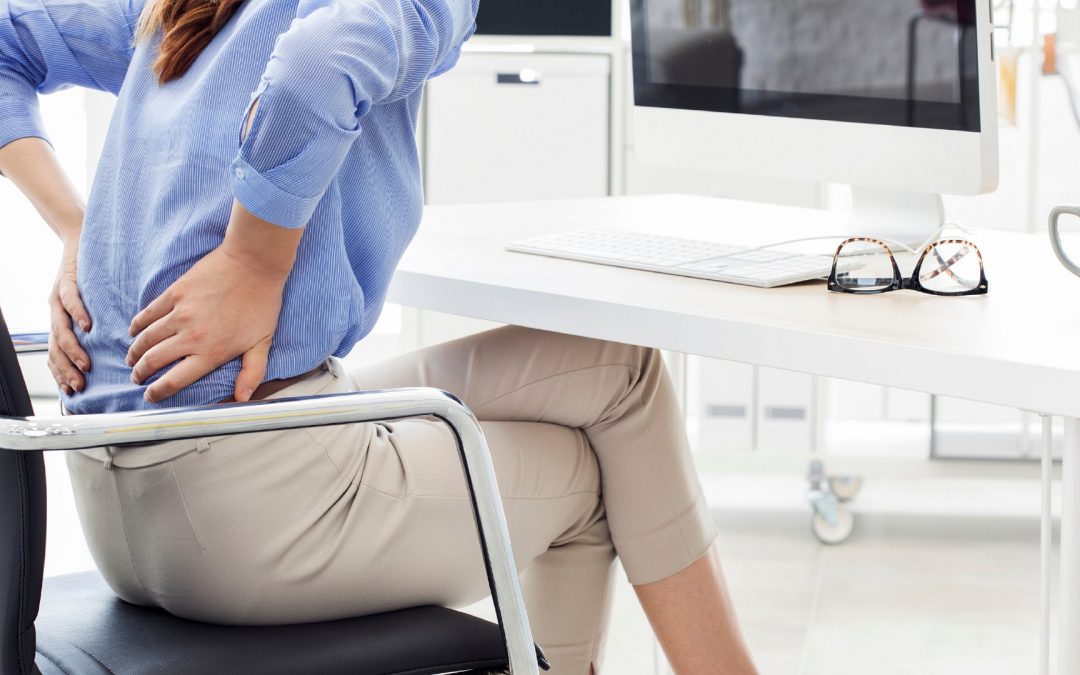How to Manage Lower Back Pain with Exercise
Adapted from an article written by Michelle Jacobs RKin, Kincardine FHT
What is lower back pain?
Lower back pain is one of the most common muscle injuries. Almost everyone experiences it at some point in life. The lower back (lumbar region of the spine) consists of interconnecting bones, joints, nerves, ligaments, and muscles. These all work together to support the upper body’s weight and provide mobility for movements such as bending and twisting. The nerves that pass through the lower back supply the sensation and power to muscles of the pelvis, legs, and feet. Considering how much happens in this area of the body, it is easy to see how an injury to any of these moving parts can affect overall function.
What contributes to low back pain?
The main contributor is poor posture and lifting technique. Lifting items with poor posture and technique makes it easy to overload and over-stretch the back. This overload can cause damage to the muscles, ligaments, or discs, which activates the body’s inflammatory response.
What are the symptoms of low back pain?
The symptoms felt can range from mild to severely debilitating, depending on the underlying cause of the pain. Some symptoms experienced include:
- Pain that is dull or achy
- Stinging, burning pain that moves from the low back to the backs of the thighs and sometimes to the feet (often caused by sciatica)
- Muscle spasms and tightness in the low back, pelvis, or hips
- Pain that is worsened after prolonged sitting or standing
- Difficulty standing up straight, walking or going from standing to sitting
How long does low back pain last?
Acute back pain: is a sudden onset and only lasts a few days or weeks. Acute pain is the body’s normal response to injury or tissue damage. As the body heals, the pain will gradually subside.
Subacute: is typically a muscle strain or joint pain caused by a mechanical injury that lasts between 6 weeks and 3 months.
Chronic low back pain: lasts over 3 months, is severe, does not respond to initial treatments, and requires a thorough medical assessment to determine the cause.
How do you treat low back pain?
No matter the cause, initial treatment is always the same. Avoid HARM (Heat, Alcohol, Re-injury, and Massage) as this increases inflammation and swelling in the area, slowing down the body’s healing process. Treat with:
- Pain relief medications
- Ice packs
- Modify activities to reduce the stress on the lower back
Getting moving with low back pain:
Continue to participate in low-intensity activities and avoid bed rest, except during severe pain. Over time, increase the intensity and duration of the movement until you get back to your normal activities. Although staying active while experiencing pain can be challenging, being active can improve lower back pain over the long term.
Regular core exercise can help prevent or manage your lower back pain. Strengthening the core muscles relieves back pain and can reduce your risk of further injury. It is important to then stretch the muscles to restore range of motion and prevent injury. Stretching after strengthening also helps to reduce muscle soreness and increase flexibility of the muscles. A great exercise program to provide individuals who are suffering from mechanical back pain is the Spine Conditioning Program (https://orthoinfo.aaos.org/en/recovery/spine-conditioning-program/spine-conditioning-program-pdf/). This program outlines how to stretch and strengthen the core muscles.
Preventing lower back pain:
Anyone looking to prevent lower back pain to incorporate these exercises 2-3 times per week into your usual exercise routine. If you are currently experiencing lower back pain, speak with your health care provider or kinesiologist before starting this exercise program.
For more information about any of the free services offered by the Upper Grand Family Health Team, visit our website at www.uppergrandfht.org or call our office at 519-843-3947. Like us on Facebook or Instagram (@UpperGrandFamilyHealthTeam) for information on upcoming programs and events in the area!
Resources
A Visual Guide to Low Back Pain. (n.d.). WebMD. https://www.webmd.com/back-pain/ss/slideshow-low-back-pain-overview
Exercising with Lower Back pain. Exercise is Medicine. https://www.exerciseismedicine.org/lower-back-pain/
Peloza, J., MD. (n.d.). Lower Back Pain Symptoms, Diagnosis, and Treatment. Spine-health. https://www.spine-health.com/conditions/lower-back-pain/lower-back-pain-symptoms-diagnosis-and-treatment






